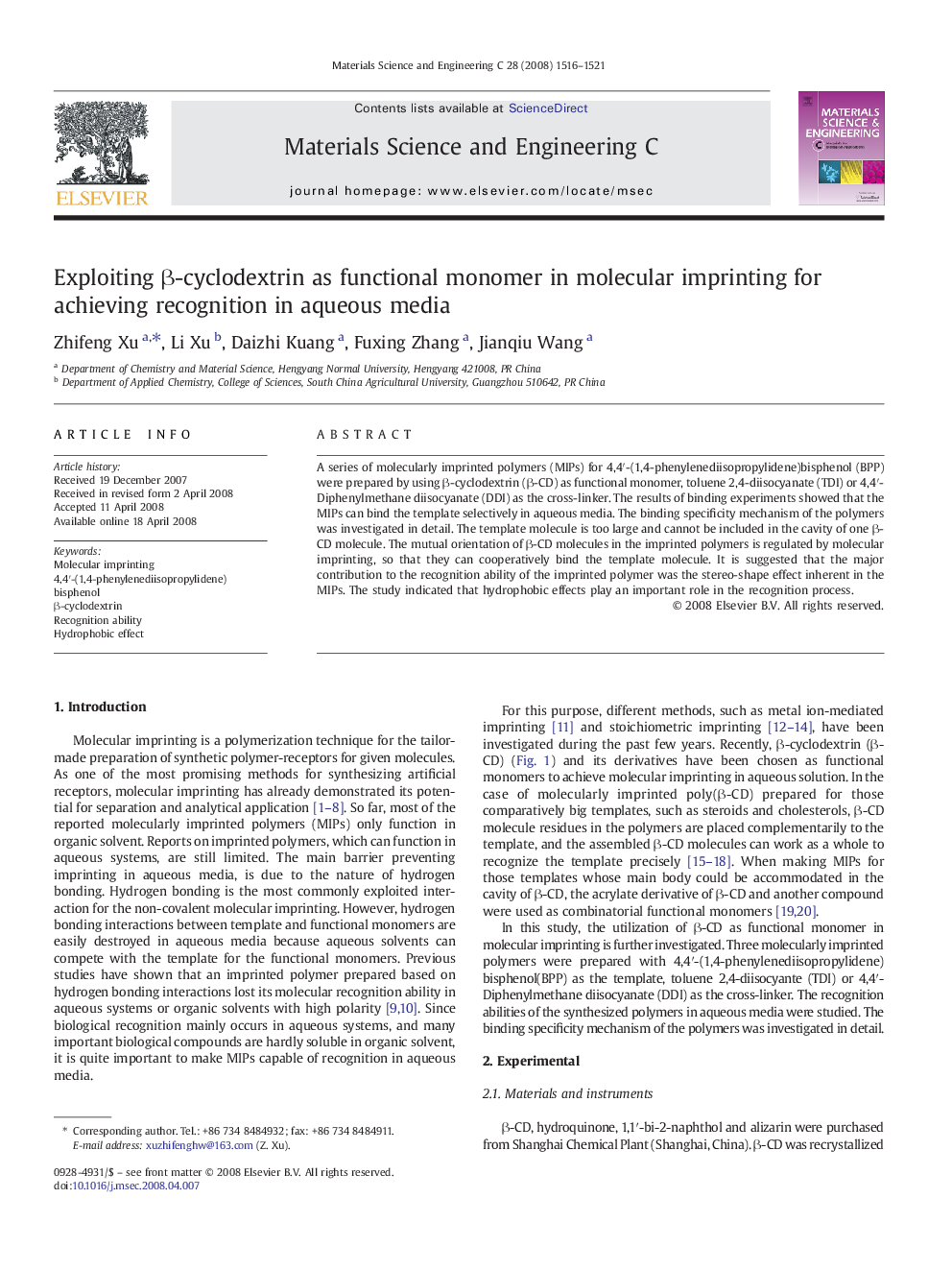| Article ID | Journal | Published Year | Pages | File Type |
|---|---|---|---|---|
| 1430860 | Materials Science and Engineering: C | 2008 | 6 Pages |
A series of molecularly imprinted polymers (MIPs) for 4,4′-(1,4-phenylenediisopropylidene)bisphenol (BPP) were prepared by using β-cyclodextrin (β-CD) as functional monomer, toluene 2,4-diisocyanate (TDI) or 4,4′-Diphenylmethane diisocyanate (DDI) as the cross-linker. The results of binding experiments showed that the MIPs can bind the template selectively in aqueous media. The binding specificity mechanism of the polymers was investigated in detail. The template molecule is too large and cannot be included in the cavity of one β-CD molecule. The mutual orientation of β-CD molecules in the imprinted polymers is regulated by molecular imprinting, so that they can cooperatively bind the template molecule. It is suggested that the major contribution to the recognition ability of the imprinted polymer was the stereo-shape effect inherent in the MIPs. The study indicated that hydrophobic effects play an important role in the recognition process.
